The WD Blue SN5100 is a special NVMe, not because it features PCIe Gen 5 (it doesn’t) or because it is designed to be the fastest on the market. Rather, it’s the first in the WD Blue mainstream NVMe lineup—started with the SN500—since Western Digital split off Sandisk as a separate company.
The new SSD is now a Sandisk drive, despite having “WD” in its model name.
Tip
Western Digital (WD)’s decision to split off the NAND-based product to Sandisk (a light name change from “SanDisk”) as a separate company means it retains all hard drive-based products, including those with “SanDisk” in their names. Similarly, Sandisk takes over all NAND-based products—SSDs, memory cards, and so on—including those bearing the “WD” in their models.
Here’s the bottom line: With noticeably faster performance, the WD Blue SN5100 is an excellent upgrade to the previous version, the SN5000, which was released a year ago. It offers sufficient performance to rival even more expensive drives at a price point that won’t leave a hole in your wallet. Get one today!
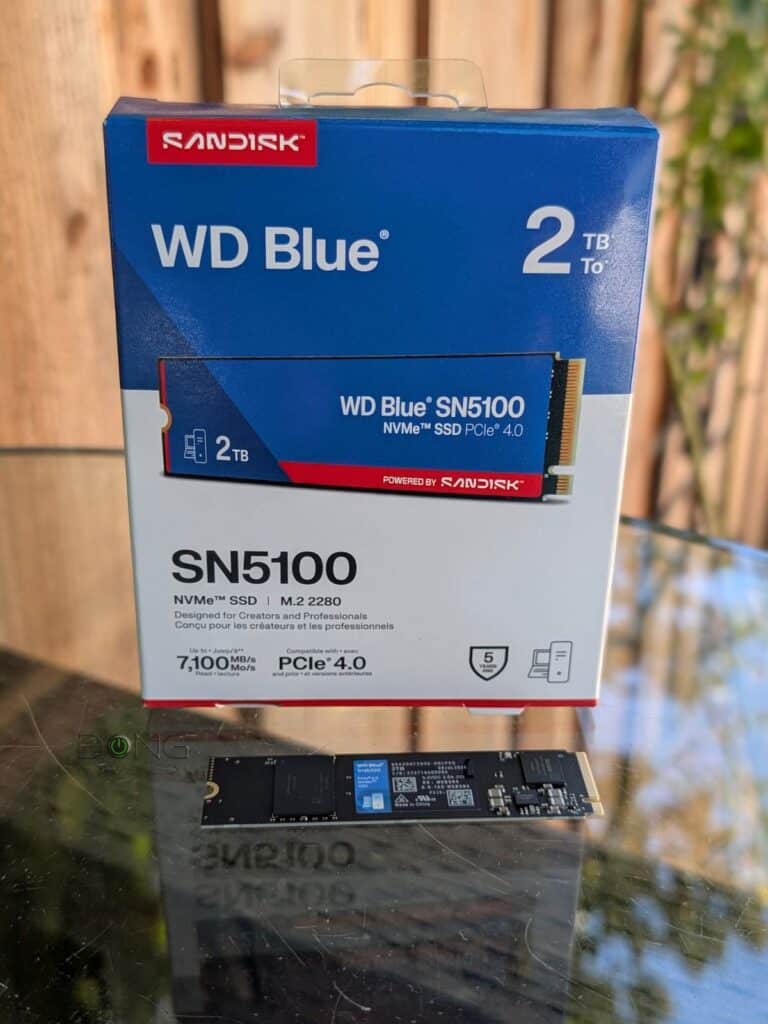
WD Blue SN5100: A frill-free and straightforward NVMe SSD that screams top PCIe Gen 4×4 speed
As the name suggests, the WD Blue SN5100 is meant to be an incremental upgrade to the previous WD Blue SN5100, and it indeed proved to be significantly faster. The new drive pushes the envelope for the PCIe Gen 4×4 standard it features.
While it’s in no way comparable to PCIe Gen 5×4 drives, including Sandisk’s new WD Black 8100, in terms of speed, it’s more than fast enough for most consumers. It also ran cool in my trial, which is always a good thing.
Other than that, the WD Blue SN5100 continues to leverage Sandisk’s (formerly WD’s) nCache 4.0 for fast sequential (copy) speeds and high endurance. The technology utilizes a hybrid SLC (Single-Level Cell) cache to enhance the performance of QLC (Quad-Level Cell) SSDs. Specifically, per Sandisk, it “intelligently” writes data to fast SLC blocks first and then moves it to slower QLC blocks during idle time. The process enhances write speeds and extends the drive’s lifespan, particularly under heavy loads.
The result? Compared to previous WD Blue drives, including the SN5000, the SN5100 demonstrated a significant step up in real-world performance, as shown in the performance section. The table below compares the hardware specifications of the WD Blue SN5100 to those of its predecessor.
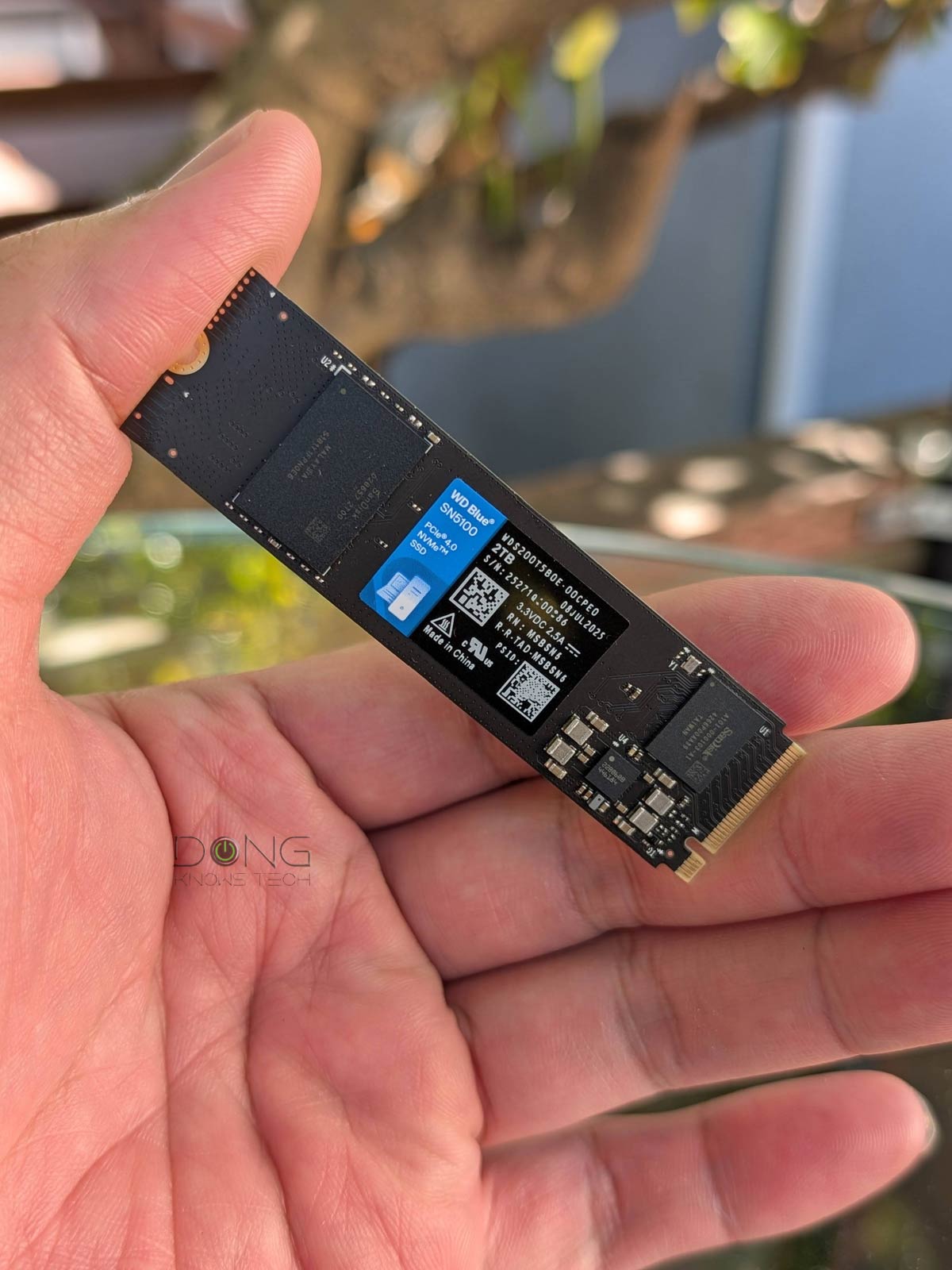
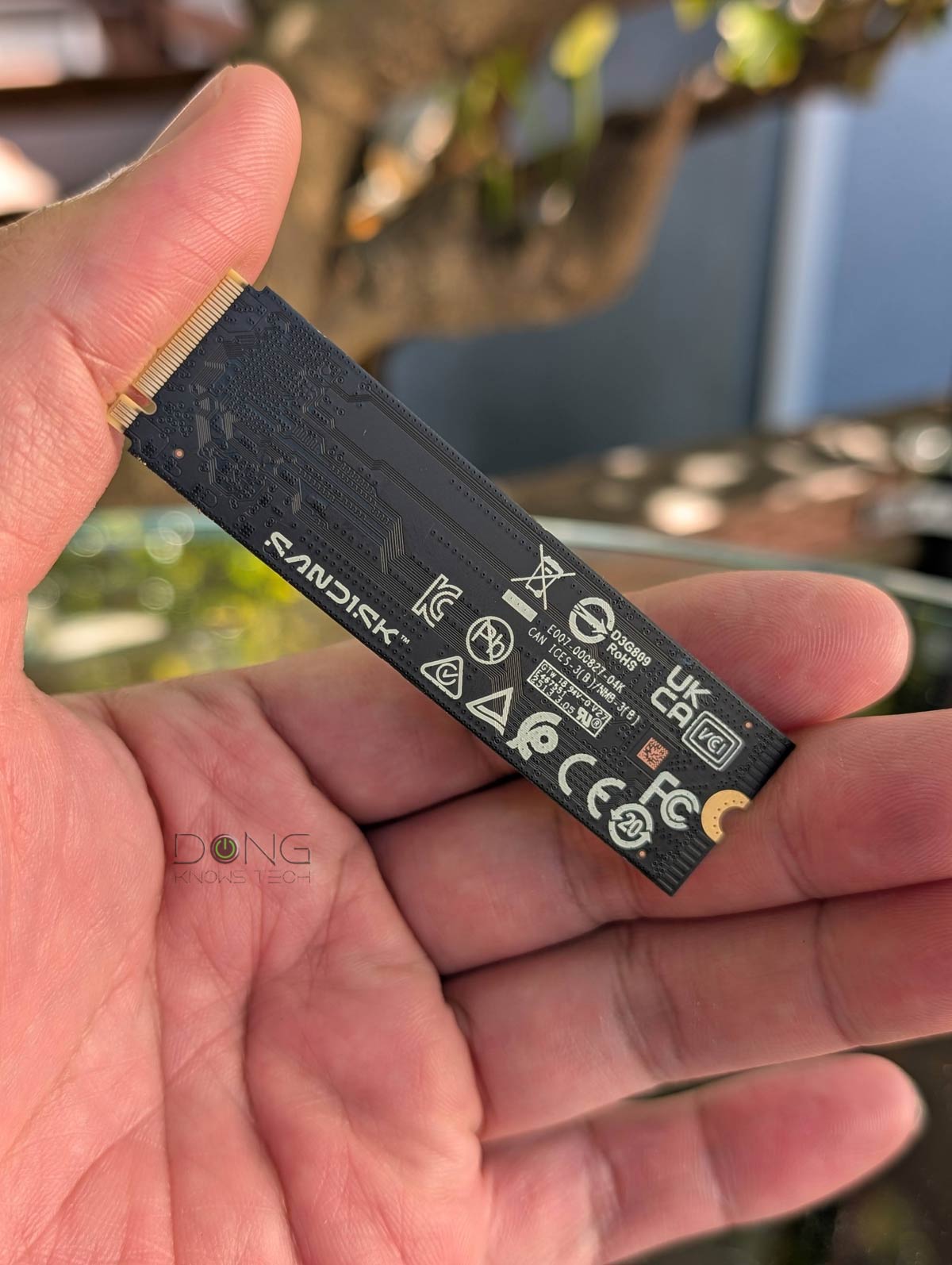
Sandisk WD Blue SN5100 vs. WD Blue SN5000: Hardware specifications
| WD Blue SN5100 | WD Blue SN5000 | |
| Capacity | 500GB, 1TB, 2TB, 4TB | |
| Form Factors | M.2 2280 (80mm x 22mm x 2.38mm) | |
| Interface | PCIe Gen 4×4, NVMe | |
| Controller | Sandisk NVMe Controller | WD NVMe Controller |
| NAND Flash | Sandisk BiCS8 QLC 3D CBA NAND | 500GB-2TB: WD BiCS5 TLC 3D NAND 4TB: WD BiCS6 QLC 3D NAND |
| Endurance (Terabytes Written) | 300TBW per 500GB | |
| Seq. Read (up to) | 500GB: 6,600 MB/s 1TB and 2TB: 7,100 MB/s 4TB: 6,900 | 500GB-2TB: 5,150 MB/s 4TB: 5,500 MB/s |
| Seq. Write (up to) | 500GB: 5,600 MB/s 1TB-4TB: 6,700 MB/s | 500GB-2TB: 4,900 MB/s 4TB: 5,000 MB/s |
| Rand. Read 4KB (up to) | 500GB: 600K IOPS 1TB and 2TB: 1M IOPS 4TB: 900K IOPS | 500GB-2TB: 730K IOPS 4TB: 690K IOPS |
| Rand. Write 4KB (up to) | 500GB and 4TB: 1.1M IOPS 1TB and 2TB: 1.3M IOPS | 500GB-2TB: 770K IOPS 4TB: 900K IOPS |
| Architecture | DRAM-less | |
| Special Features | nCache 4.0 | |
| Software | Sandisk Dashboard | WD Dashboard |
| Warranty | 5 Years | |
| Release Date | August 25, 2025 | June 18, 2024 |
| US Pricing (at launch) | 500GB: $54.99 1TB: $79.99 2TB: $149.99 4TB: $299.99 (Buy now!) | 500GB: $79.99 1TB: $98.99 2TB: $149.99 4TB: $289.99 (Buy now!) |


A typical WD Blue NVMe SSD
As shown in the table above, the new SN5100 is essentially the same as its predecessor but with higher-rated performance in specific capacities and aspects.
At the score, though, it’s still a DRAM-less SSD with no built-in hardware encryption with the same endurance rating of 300TBW per 500GB, which is standard for most PCIe Gen 4 SSDs.
The new drive also uses the same Dashboard toolbox software, now labeled as “Sandisk Dashboard” (instead of “WD Dashboard”), which assists users with firmware updates, health monitoring, speed testing, and other helpful tools. There’s also a downloadable third-party drive imaging application.
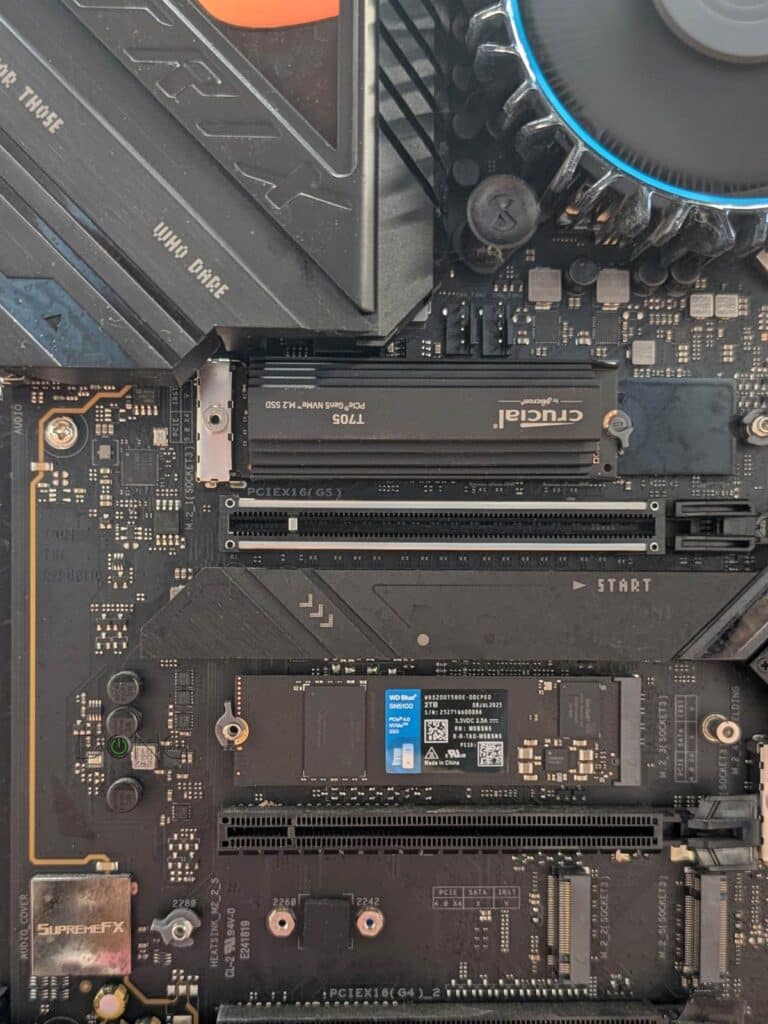
WD Blue SN5100: Excellent overall performance
It tested the 2TB version of the SN5100 for over a week and was impressed with its performance. It’s the new top performer in copy speed among its peers, achieving nearly 3,100MB/s when performing both reading and writing simultaneously, which is faster than some PCIe Gen 5 drives.


The new drive also performed well in random access tests, clearly outperforming the previous model, the SN5000. However, it wasn’t the fastest compared with others.
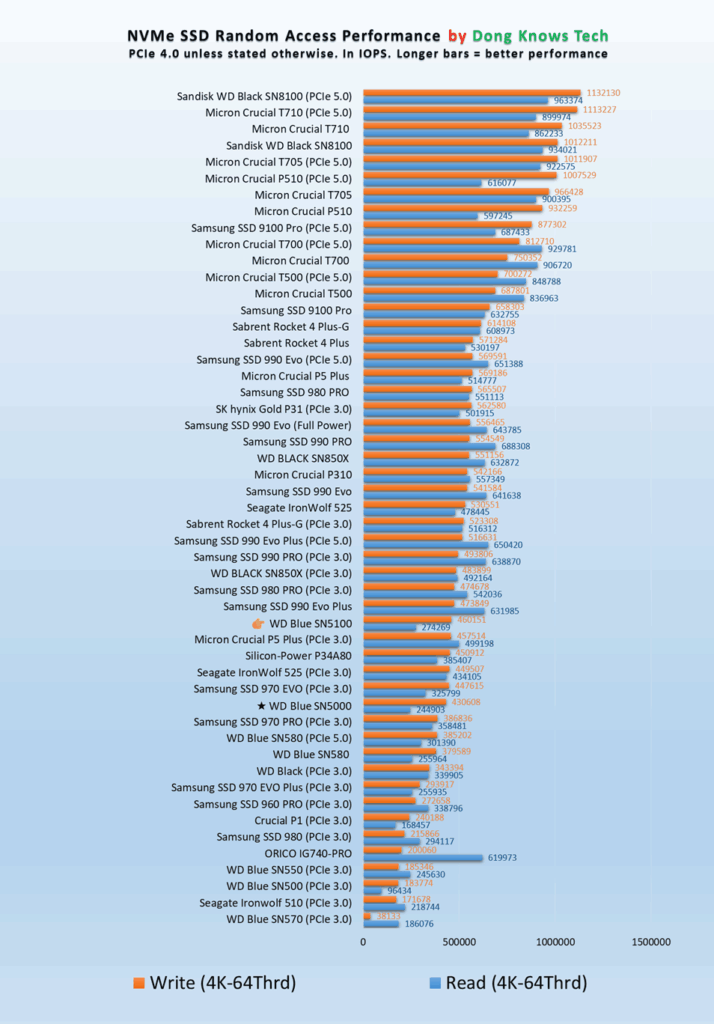
Similar to the WD Blue SN5000, the new WD Blue SN5100 performed consistently even during extended operations. I tried copying a few hundred gigabytes of data, and the performance remained consistent throughout the entire process.
Like other PCIe Gen 4 drives, it also didn’t experience any heat issues. It became warm to the touch, but never to the point of concern. This type of low heat generation is never found in a PCIe Gen 5 drive.
Sandisk WD Blue SN5100's Rating
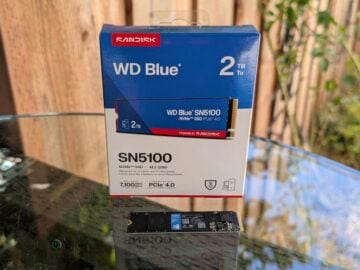
Pros
Excellent PCIe Gen 4×4 performance
Helpful Dashboard software
5-year warranty, runs cool, affordable
Cons
No hardware encryption; no larger-than-4TB option
Conclusion
The Sandisk WD Blue SN5100 NVMe SSD is a testament that we generally don’t need PCIe Gen 5 drives in most cases. Its excellent performance, friendly pricing, and the lack of heat issues mean you can use it in any application with ease. Get one today!



Comments are subject to approval, redaction, or removal. You're in the no-nonsense zone and that applies BOTH ways.
It's generally faster to get answers via site/page search. Your question/comment is one of many Dong Knows Tech receives daily.
Thank you!
(•) If you have subscription-related issues or represent a company/product mentioned here, please use the contact page or a PR channel.